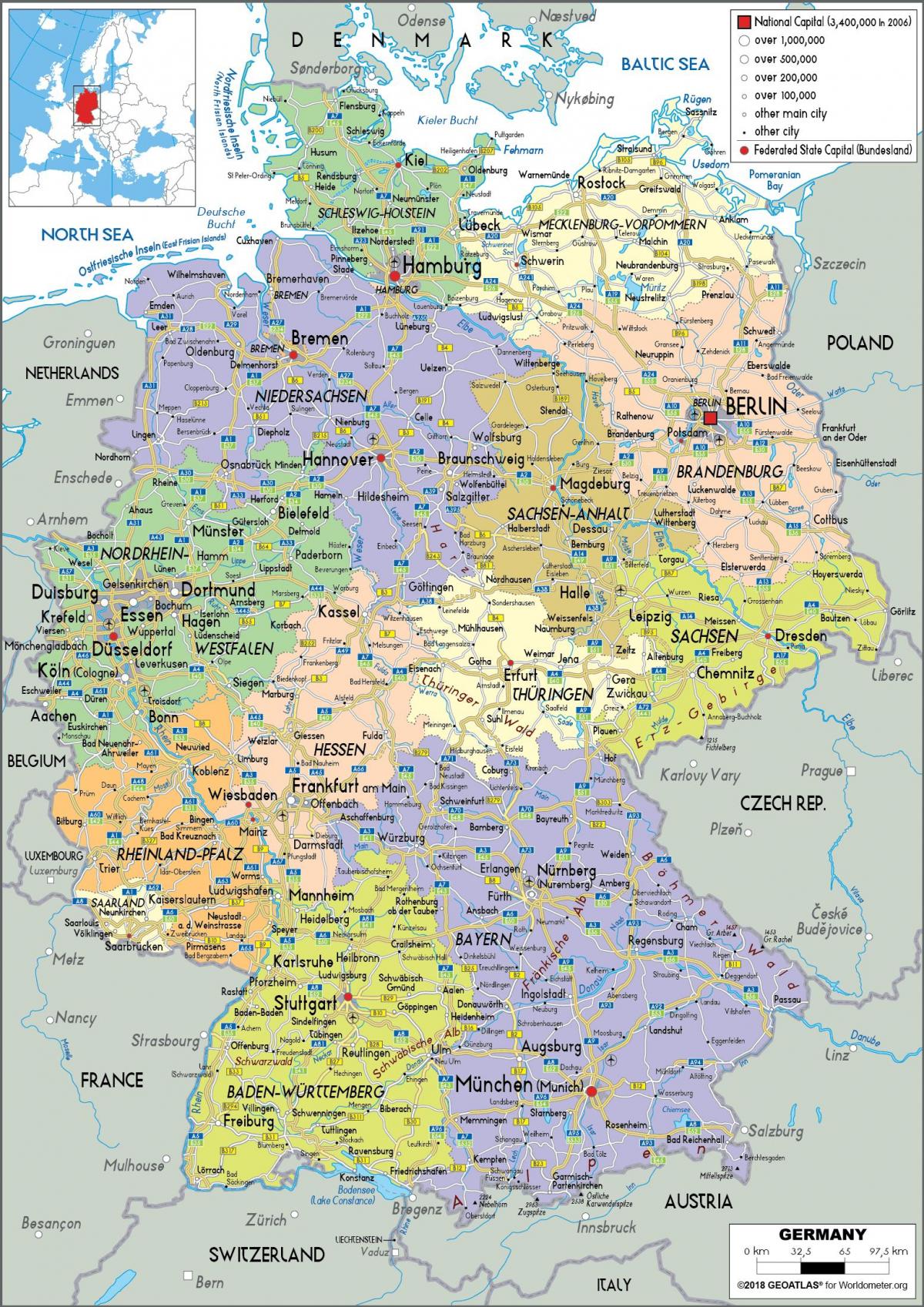search
Germany political map
Map o Germany political. Germany political map (Western Europe - Europe) to print. Germany political map (Western Europe - Europe) to download. Germany is a federal parliamentary republic, based on representative democracy. The Chancellor is the head of government, while the President of Germany is the head of state, which is a ceremonial role with substantial reserve powers. Executive power is vested in the Federal Cabinet (Bundesregierung), and federal legislative power is vested in the Bundestag (the parliament of Germany) and the Bundesrat (the representative body of the Länder, Germany regional states). There is a multi-party system as its shown in Germany political map that, since 1949, has been dominated by the Christian Democratic Union (CDU) and the Social Democratic Party of Germany (SPD). The judiciary of Germany is independent of the executive and the legislature. The political system is laid out in the 1949 constitution, the Grundgesetz (Basic Law), which remained in effect with minor amendments after 1990's German reunification.
The Basic Law for the Federal Republic of Germany is the constitution of Germany as its mentioned in Germany political map. It was formally approved on 8 May 1949, and, with the signature of the Allies of World War II on 12 May, came into effect on 23 May, as the constitution of those states of West Germany that were initially included within the Federal Republic. The 1949 Basic Law is a response to the perceived flaws of the 1919 Weimar Constitution, which failed to prevent the rise of the Nazi party in 1933. The President has a rather ceremonial role in creating a new Chancellor and a theoretically more significant role in sending the Bundestag home. The constitution provides some cases where the President could exert more power, but this has never occurred.
The Parliament of Germany, the Bundestag, has a plural multi-party system, with two major parties, the Social Democratic Party of Germany (SPD) and the Christian Democratic Union (CDU), with its sister party, the Christian Social Union (CSU) in the same parliamentary group, also known as CDU/CSU or the Union as you can see in Germany political map. Furthermore, Germany has three minor parties, the Free Democratic Party (FDP), The Left, and Alliance '90/The Greens. The federal government of Germany usually consists of a coalition of a major and a minor party, most typically CDU/CSU and FDP, or a 'red-green alliance' of the SPD and Greens. From 1966 to 1969, and again from 2005 to 2009, the federal government consisted of a Grand Coalition.
The sheer proliferation of Germany political parties contributed to the downfall of the Weimar Republic in 1933, but they have shown an increasing tendency toward consolidation since the early days of the Federal Republic. Smaller parties generally either have allied themselves with the larger ones, have shrunk into insignificance, or simply have vanished. Reunified Germany has, in effect, only two numerically major parties, the Christian Democratic Union (Christlich-Demokratische Union; CDU) and the Social Democratic Party of Germany (Sozialdemokratische Partei Deutschlands; SPD), neither of which can easily attain a parliamentary majority as its shown in Germany political map.


